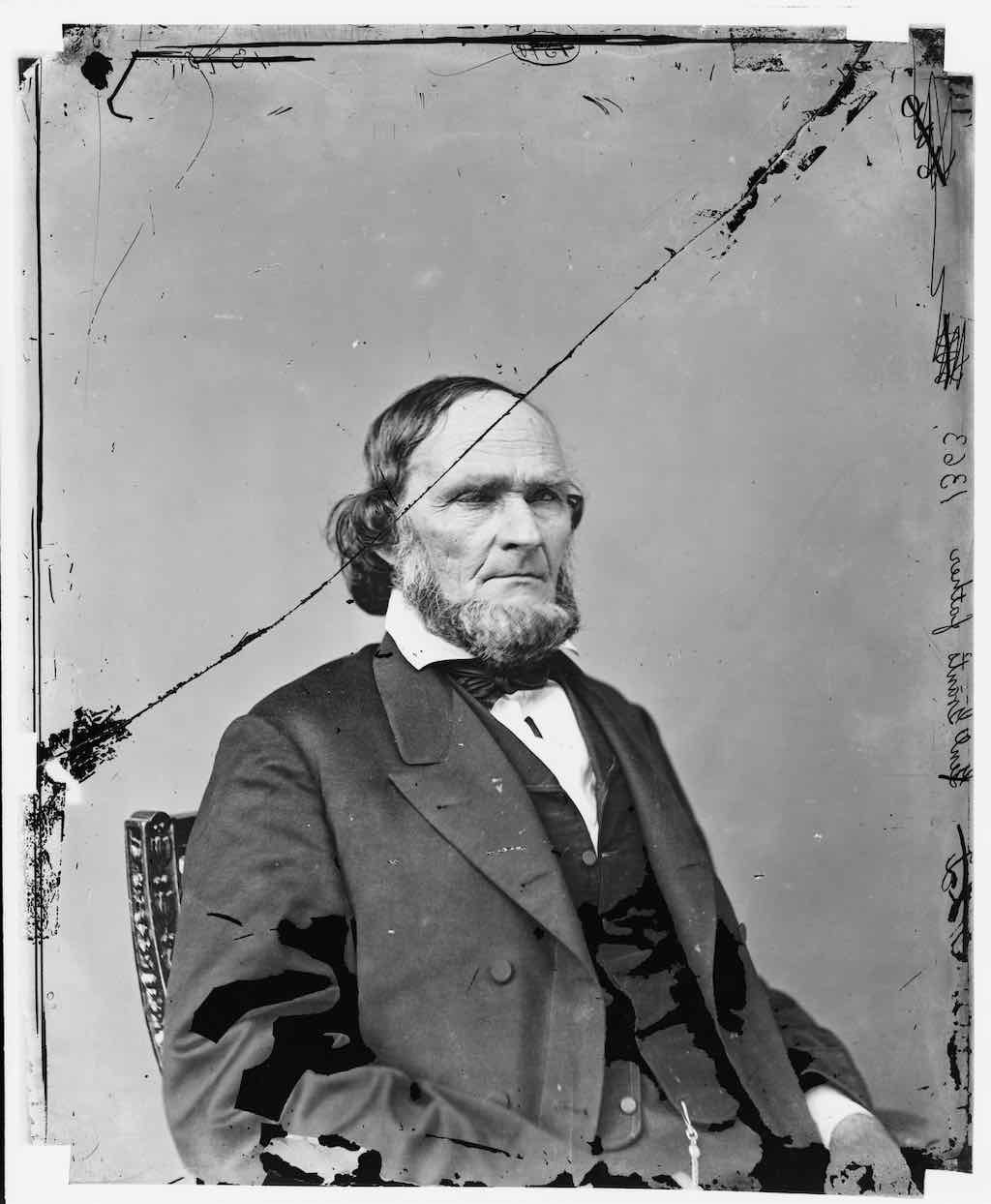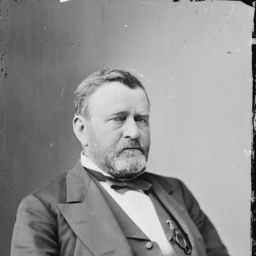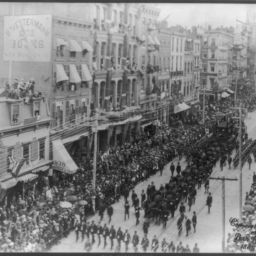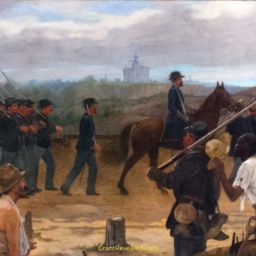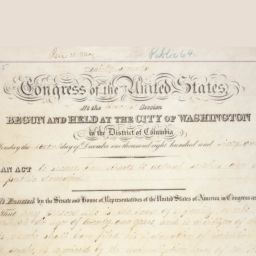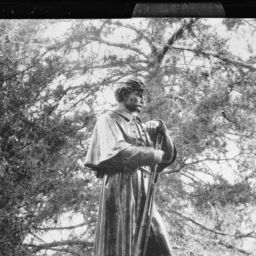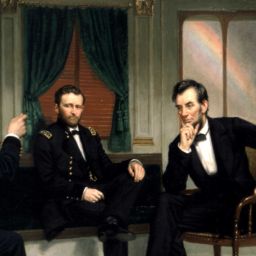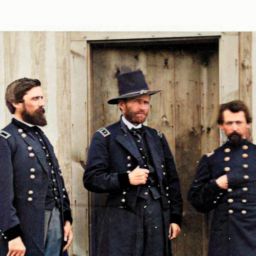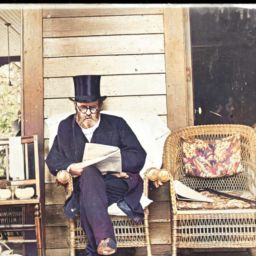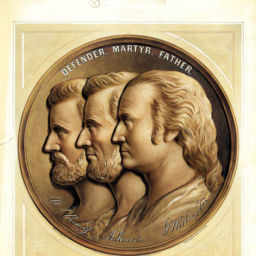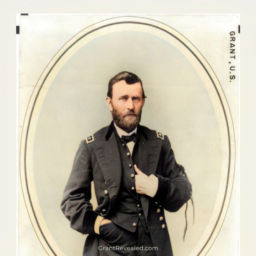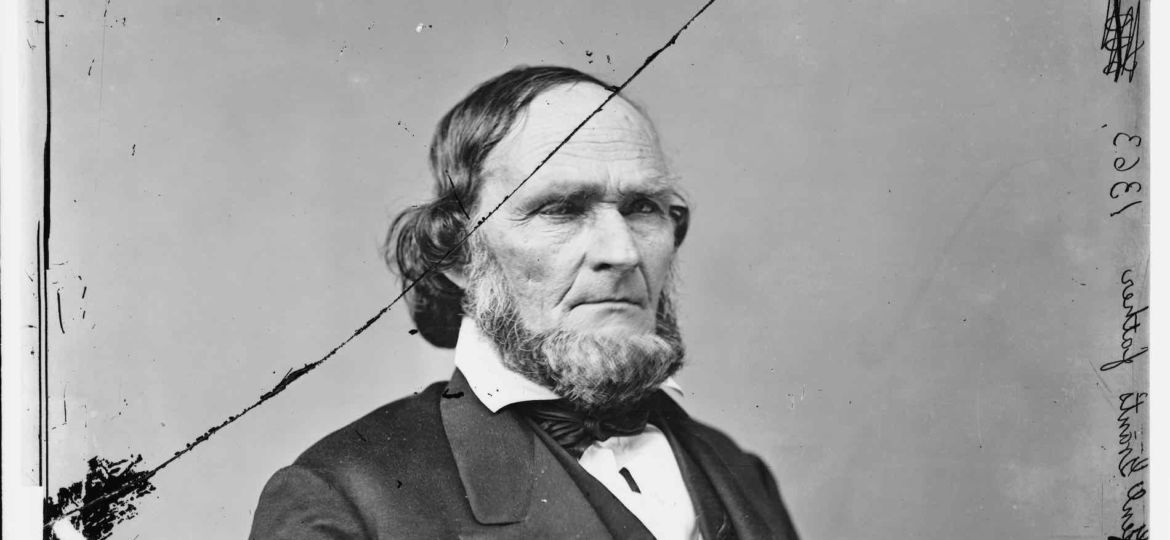
Ulysses S. Grant’s father, Jesse Root Grant, was a self-made man. He held strong abolitionist views. He provided well for his family, could be publicly outspoken and opinionated, and at times proved exasperating, including for the adult Grant. Clearly, Grant’s success as a Civil War general and then as U.S. president meant a great deal to Jesse. Interestingly, Grant’s mother, Jesse’s lifelong spouse Hannah Simpson, rarely acknowledged her son’s achievements to others lest she seem boastful.1
The timeline elements below principally reflect Ron Chernow’s biography of Grant, the Wikipedia page on Jesse Root Grant, and an archived Ulysses S. Grant website.
Jesse seems to have had significant energy and determination for much of his life. Some among both acquaintances and historians of Grant see in Ulysses S. Grant a proclivity towards indolence, at least in certain areas of Grant’s life. And depending on one’s interpretation of a sentence in an 1883 letter written by Grant, he recognized it in himself as a lifelong tendency, though he may have seen it as a trait of his retirement years only. Whatever degree of indolence Grant wrestled with, I suspect that he did not inherit it from Jesse.
1794 January 23, Jesse Grant is born near Greensburg, Westmoreland County, Pennsylvania. Jesse’s parents were originally following America’s early western expansion along the Connecticut Western Reserve.
1799, the family moved to East Liverpool, Ohio, a group of six log-houses then called Fawcettstown, via the Mononagahela and Ohio Rivers. Also, Jesse’s brother John Kelly Grant was born.
1802–1804, the family lived in Youngstown, Ohio. A brother, Roswell, and sister, Rachel, were born there.
1804, the family moved to Deerfield, Hamilton County, Ohio.
1805 April 10, Jesse’s mother died. Jesse is only 11 years old.
1805–1808, Jesse worked in Ohio at places not known to us. Jesse’s sister Margaret and brother Roswell lived with James Hillman, and Noah with the youngest children lived in Youngstown Ohio, according to Harriet Taylor Upton and Harry Gardner Cutler, History of the Western Reserve, Vol. I (Chicago: The Lewis Publishing Co., 1910, 606.
1808–1810, Jesse, from ages 14 to 16, and his oldest sibling, Susan, lived in Youngstown, Ohio, with family of Judge George Tod, Justice of the Ohio Supreme Court. Tod’s son David, 6 years old in 1810, in 1862 became the 25th governor of Ohio.
1810–1812, Jesse lived in Deerfield, Ohio, in the house of Owen Brown while working at Brown’s tannery. Also in the house was Owen Brown’s son, John Brown, who later would become the anti-slavery militant who is executed in 1859. Jesse maintained the highest regard for John Brown in later years, during Brown’s fight against slavery.
1811, Jesse’s father Noah Grant, bringing with him the two youngest children, moves to Peter Grant’s house in Maysville, Kentucky. Jesse is now 17 years old.
1812–1815, at age 18, Jesse begins an apprenticeship at the tannery of his half-brother Peter Grant, in Maysville, Kentucky.
1815, at age 21, Jesse becomes a tannery owner in Deerfield, Ohio.
c. 1816-1819, Jesse is a tannery co-owner with John F. Wells in Ravenna, Portage County, Ohio. Jesse roomed with an employee at an inn across from his tannery. At this time, Owen Brown was county commissioner in Ravenna.
1819, the 25-years-old Jesse began courting Prudence Hall of Ravenna. Then, ill with ague and unable to work, Jesse losses his savings, and his father dies in Maysville.
1820 January, Jesse traveled to Maysville, Kentucky, to recuperate, after which, that same year, he began working at Thomas Page’s tannery in Bethel, Ohio. In June, he was made the foreman for Thomas Page’s operation in Point Pleasant, Ohio, and moved there.
1821, Jesse’s brother Noah died, and on June 24, Jesse married Hannah Simpson. Around this time, General Lytle (I assume William Lytle who died in 1831), offered Jesse a tannery in Cincinnati. But Jesse finds the offer too risky and refuses the offer and its responsibilities.
1822 April 27, Jesse’s first child was born at about 5:30 a.m.: Hiram Ulysses Grant, who became 18th president of the United States.
1823 August 23, at the age of 29 years old, Jesse bought land in Georgetown, Ohio, for $40 from Thomas Morris and William Middleton, filing the land transfer papers with Thomas Hamer, Justice of the Peace. Over the course of the summer and fall, Jesse built a currier shop, tannery, and a small two-story brick house in Georgetown, after which he moves his wife and son “Ulyss” into the new house with him.
1824, Jesse voted for the Democratic Party’s candidate for U.S. president Andrew Jackson in the presidential election. No candidate won a majority of the votes of the Electoral College, and the U.S. House of Representatives decided the election, in accordance with the Constitution. John Quincy Adams won the presidency despite having won only 31% of the popular vote compared to Jackson’s 41%.
1825, Jesse’s son Samuel Simpson was born. Jesse also that year added a kitchen lean-to behind the house.
1828, Jesse’s daughter Clara Rachel was born. In that year’s presidential election, he voted for Andrew Jackson again. This time, Jackson was elected.
1829, Jesse’s half-brother Peter Grant died. Also that year, Jesse worked to help elect Thomas Hamer as speaker of the Ohio House of Representatives.
1831, Jesse unsuccessfully ran for state representative of Brown county against James Pilson.
1832, Jesse’s daughter Virginia Paine was born. Also that year, Jesse, Thomas Hamer, and Daniel Barney were appointed to a committee to prepare addresses to rally Democratic voters at the party’s county convention. He also helped build up the Georgetown debating society. However, Jesse also wrote a caustic letter to the abolitionist newspaper the Castigator. The letter severed his friendship with Thomas Hamer. In that year’s presidential election, Jesse again voted for Andrew Jackson, who decisively won reelection. Jesse’s brother John died in Texas, too, in that year. Jesse traveled to Texas soon afterwards, and published a long account of his trip. At about that same time, Jesse, with 10-year-old son Ulysses, helped his sister Margaret (1795–1873) to auction property in Deerfield, Ohio, and move to Georgetown after her husband John G. Marshall died. She had five children at the time, ranging from the age of 14 to 4. And all but the eldest of them moved with her.
c. 1832–1837, Jesse’s nephew recently of Deerfield, Ohio, John Marshall, worked at Jesse’s tannery from the age of 9 to 14 years old. In later years, John Marshall worked as a printer and then studied law.
1833, Jesse traveled to Coventry, Connecticut, to conduct business concerning a 200-acre inheritance for Peter Grant’s heirs.
1834, Jesse, age 40, built the Georgetown jail and also was engaged in a lawsuit. Jesse engaged in a lawsuit; needed deposition from Louisville.
1835, Jesse’s son Orvil Lynch was born. That year also, Jesse hired a tannery journeyman who stole Jesse’s leather and tried to sell it to a shoemaker, who turned him in. Jesse orders the journeyman-thief to leave town, but he refuses, and draws a knife. Jesse disarmed him, sent Ulysses for his cowhide, and whipped the journeyman. Still, the journeyman refused to leave. Finally, some of the villagers compelled him out of town.
1836, Jesse did not vote in the presidential election. He lacked faith in the Democratic Party’s candidate Martin Van Buren, who was the U.S. Vice President.
1837, Jesse, then affiliated with the Whig Party, began a two-year tenure as the mayor of Georgetown, Ohio.
1838, Jesse enrolled his son Ulysses in anti-slavery leader John Rankin’s academy for the winter.
1839, Jesse wrote a letter to Senator Thomas Morris, inquiring about appointments to the U.S. Military Academy for Ulysses, and was referred to Thomas Hamer. On February 19, Jesse wrote a request to Hamer, a political adversary since 1832. But both Jesse and Hamer were eager for rapprochement, and Hamer generously gave Ulysses the appointment that Jesse requested. Ulysses left home for West Point on May 15. Also that year, Jesse’s daughter Mary Frances was born, and it was Jesse’s final year as mayor.
1840, Jesse voted for William Henry Harrison for president, the candidate of the Whig Party. Harrison won the election but dies 31 days after being inaugurated.
1841, Jesse bought a house from Ohio’s former U.S. senator Thomas Morris, located at the northwest corner of Water and Charity Streets in Bethel, Ohio. Jesse then opened a tannery on the southwest corner of Charity and Water Streets nearby. In the summer of that year, Ulysses visited while on furlough from West Point.
1842, Philip Bergen Swing of Batavia, Ohio, became Jesse’s lawyer. As president, Jesse’s son Ulysses appointed Swing to a judgeship in the U.S. district court.
1847, Jesse sold his Georgetown home to Marshall Jenning for $2,600.
1848 August 22, Jesse’s son Ulysses married Julia Dent at her parents townhouse in St. Louis, Missouri. Because Julia’s father Fredrick “Colonel” Dent owned slaves at the time, Jesse refused to attend the wedding.
1851, Jesse became the first mayor of Bethel, Ohio.
1854, Jesse moved to Covington, Kentucky, and opens a leather goods store there on Madison Avenue.
1855, Jesse campaigned for Salmon P. Chase for governor of Ohio.
1860, Jesse, then 60 years old, bought out his partner in a leather good store that they had opened on Main Street in Galena, Illinois.
1862, Jesse along with Henry and Simon Mack of Cincinnati, appeared uninvited at Ulysses’ headquarters amid Grant’s Vicksburg campaign, asking for a permit from Grant for the Macks for the purchasing of cotton from within Grant’s district. Un-permitted trading in cotton in Grant’s military district was extensive, and Grant at this point not only refused the permit request but issued General Order 11. The order expelled Jews “as a class” from his district. Grant was roundly criticized from various quarters for his order and nearly censured by Congress because of it. President Abraham Lincoln quickly saw to it that the order was rescinded, but not in time to prevent some families in Paducah, Kentucky, from being compelled to leave their homes for a time.
1866, President Andrew Johnson nominated Jesse for the position of Covington postmaster. Jesse’s nomination was confirmed.
1869 March 4, Jesse was present as Chief Justice Salmon P. Chase administered the Oath of Office to Ulysses S. Grant, who was elected 18th president of the United States in 1868.
1870, President Grant nominated Jesse for another term as Covington’s postmaster. Jesse’s nomination was confirmed.
1873 June 29, Jesse died in Covington, Kentucky, in the first year of President Grant’s second term.T


